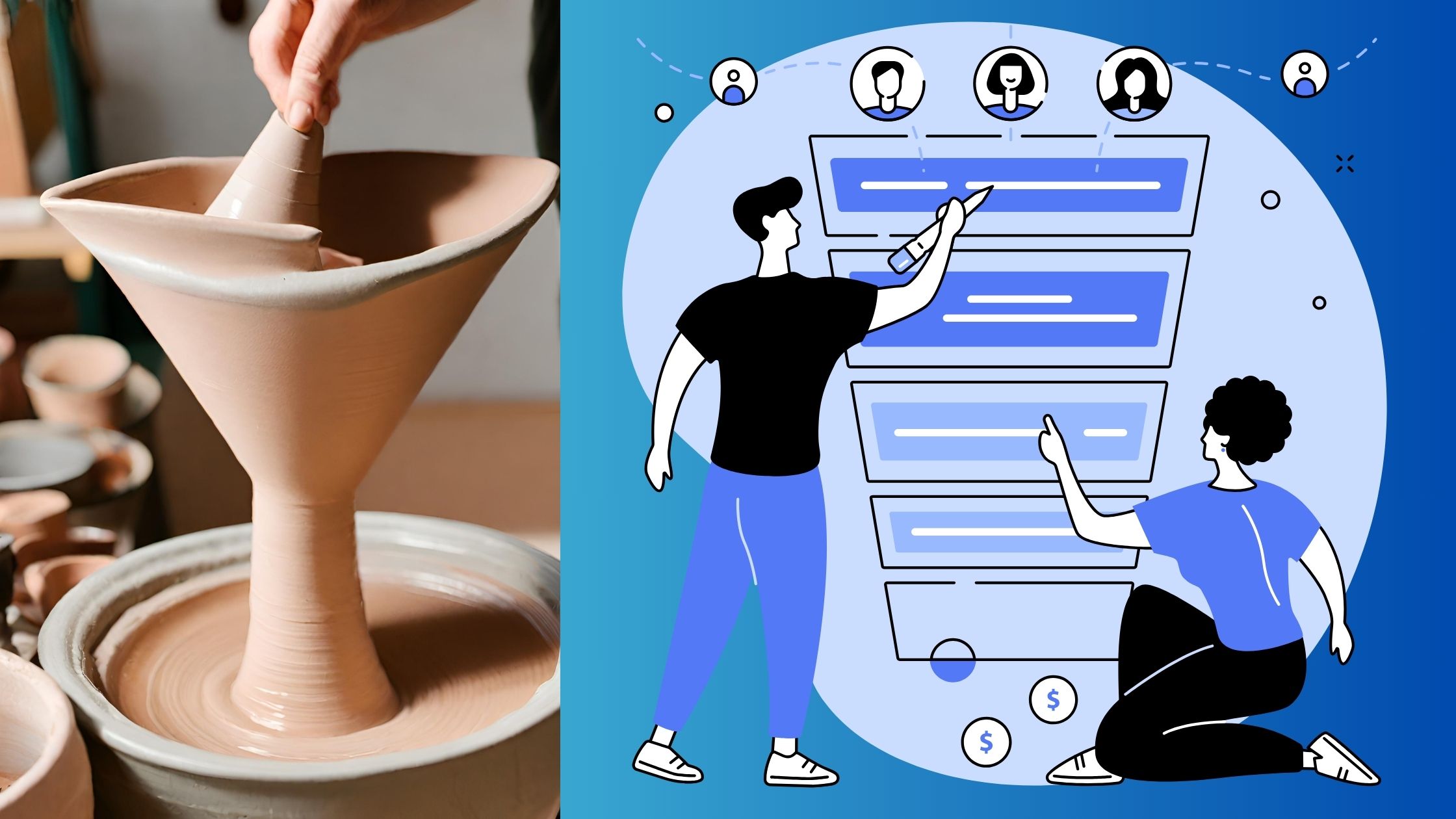How Marketing Funnel Works: Mastering Customer Journey for Sales Success in 2024 and Beyond!
- Ashish Sandhu
- 0 Comments
A marketing funnel is a strategic model that illustrates the customer journey from initial awareness to purchase. It represents the stages a potential customer goes through when interacting with a brand’s marketing efforts. The funnel concept highlights the gradual narrowing down of leads as they progress through the stages.
What is a Marketing Funnel?
Key Components of a Marketing Funnel
A typical marketing funnel consists of various stages, such as awareness, interest, desire, and action (AIDA model). These stages align with the customer’s mindset and actions as they move closer to making a purchase decision.
The Importance of Understanding the Marketing Funnel
By comprehending the marketing funnel, businesses can tailor their marketing strategies to effectively attract, engage, and convert leads. Understanding how customers move through the funnel allows marketers to create targeted campaigns and optimize the customer’s journey for better results.
| Stage | Description |
|---|---|
| Awareness | Initial stage where customers become aware of the brand or product. |
| Interest | Customers show interest and seek more information. |
| Desire | Customers develop a desire for the product or service. |
| Action | Customers take action, making a purchase decision. |
Conclusion
In conclusion, the marketing funnel serves as a roadmap for businesses to guide customers through the purchasing process. By understanding the funnel’s stages and optimizing each step, companies can enhance their marketing efforts and drive conversions effectively.
Overview of Marketing Funnel Stages
A Breakdown of Marketing Funnel Stages

The marketing funnel stages provide a framework for understanding how leads progress through the sales process. Each stage represents a significant milestone in the customer’s journey towards making a purchase decision.
Top of the Funnel: Awareness and Interest
At the top of the funnel, customers become aware of a brand, product, or service. This stage focuses on capturing the attention of potential leads and sparking their interest in what the business has to offer.
| Stage | Description |
|---|---|
| Awareness | The initial stage where customers discover the brand or product. |
| Interest | Customers express curiosity and desire to learn more. |
Middle of the Funnel: Desire and Intent
In the middle of the funnel, customers start developing a stronger interest and desire for the product or service. This stage aims to nurture leads and move them closer to making a purchase.
| Stage | Description |
|---|---|
| Desire | Customers begin to desire the product or service, seeing its value. |
| Intent | Customers demonstrate clear intention to make a purchase. |
Understanding the Customer Journey
By recognizing the various stages of the marketing funnel, businesses can tailor their marketing initiatives to meet the needs and expectations of consumers at each point in the journey. This targeted approach helps in optimizing conversion rates and enhancing overall customer satisfaction.
Top of the Funnel: Awareness and Interest
Understanding the Top of the Funnel
The top of the marketing funnel, also known as the awareness stage, is where businesses introduce potential customers to their brand, product, or service. This phase focuses on building initial awareness and capturing the attention of the target audience.
Creating Brand Awareness
At the top of the funnel, the primary goal is to generate brand awareness among potential customers. Businesses employ various marketing tactics to achieve this, including advertising, content marketing, social media campaigns, and search engine optimization (SEO).
| Marketing Tactics | Description |
|---|---|
| Advertising | Utilizing paid channels such as display ads, PPC, and social media ads to reach a wider audience. |
| Content Marketing | Creating valuable and informative content, such as blog posts, articles, and videos, to attract and engage potential customers. |
| Social Media Campaigns | Engaging with the target audience on social media platforms to increase brand visibility and reach. |
| SEO | Optimizing website content and structure to improve organic search rankings and drive traffic. |
Engaging Potential Customers
In addition to creating awareness, businesses aim to spark interest and engagement among potential customers. This involves providing valuable information, addressing pain points, and showcasing the unique selling propositions of the product or service.
Optimizing the Awareness Stage
To optimize the top of the funnel, businesses must understand their target audience and tailor their marketing efforts to resonate with their needs and preferences. By effectively nurturing leads at this stage, businesses can lay a solid foundation for moving them through the rest of the marketing funnel.
Middle of the Funnel: Desire and Intent
Exploring the Middle of the Funnel

The middle of the marketing funnel is a critical stage where potential customers transition from showing interest in a product or service to developing a strong desire and intent to make a purchase. This phase focuses on nurturing leads and guiding them towards conversion.
Nurturing Customer Desire
During the middle of the funnel, businesses aim to cultivate a sense of desire among leads for their offerings. This involves showcasing the value and benefits of the product or service, addressing specific pain points, and highlighting how it can solve the customer’s problems.
| Strategies | Description |
|---|---|
| Personalized Email Campaigns | Sending targeted emails with customized content based on the lead’s interactions and preferences. |
| Content Marketing | Providing in-depth guides, case studies, and testimonials to educate leads about the product’s capabilities and benefits. |
| Product Demonstrations | Showcasing the product through demos or trials to give leads a hands-on experience and build desire. |
Encouraging Purchase Intent
In the middle of the funnel, businesses strive to move leads towards a clear intent to make a purchase. This involves strategically positioning the product or service as the solution to the customer’s needs and demonstrating its value and superiority over competitors.
Effective Lead Nurturing
By focusing on developing desire and intent in the middle of the funnel, businesses can build strong relationships with leads and increase the likelihood of conversions. Tailoring the messaging and content to address the specific needs and preferences of potential customers can significantly enhance the effectiveness of marketing efforts at this stage.
Bottom of the Funnel: Evaluation and Purchase
Navigating the Bottom of the Funnel
The bottom of the marketing funnel is where potential customers reach the final stages of their decision-making process, evaluating options and making a purchase decision. This phase focuses on converting leads into customers and guiding them through the final steps towards a transaction.
Evaluating Purchase Options
At the bottom of the funnel, customers engage in a thorough evaluation of the product or service offerings before making a purchase decision. This stage is crucial for businesses to provide compelling reasons for customers to choose their offerings over competitors.
| Evaluation Criteria | Description |
|---|---|
| Features and Benefits Comparison | Customers compare the features, benefits, and value proposition of different options available in the market. |
| Pricing and Value Analysis | Assessing the pricing structure and perceived value of the product or service compared to similar offerings. |
| Customer Reviews and Testimonials | Examining feedback from previous customers and reviews to gauge the reputation and quality of the product. |
Facilitating the Purchase Process
In the final stages of the funnel, businesses focus on making the purchase process seamless and convenient for customers. This involves eliminating any potential barriers to purchase and providing support and assistance to guide customers through the transaction.
Conversion Optimization Strategies
By optimizing the bottom of the funnel, businesses can increase conversion rates and maximize the number of leads that complete a purchase. Employing persuasive messaging, offering incentives, and providing exceptional customer service can enhance the overall buying experience and encourage customers to make a final decision.
Conclusion: Maximizing Marketing Funnel Efficiency

Summary of the Marketing Funnel Journey
The marketing funnel serves as a roadmap for businesses to guide potential customers from initial awareness to final purchase. By understanding and optimizing each stage of the funnel, companies can streamline the customer journey and increase conversions.
Key Takeaways for Efficient Funnel Optimization
To maximize the efficiency of the marketing funnel, businesses must focus on strategic planning, targeted communication, and continuous optimization. Here are key takeaways to enhance funnel performance:
| Strategy | Description |
|---|---|
| Segmentation and Personalization | Tailoring messages and content to specific audience segments to increase relevance and engagement. |
| Data Analysis and Measurement | Utilizing analytics tools to track and analyze customer interactions at each funnel stage for informed decision-making. |
| Ongoing Testing and Optimization | Continuously testing and refining marketing strategies to improve performance and drive conversions. |
Driving Success Through Funnel Effectiveness
A well-optimized marketing funnel not only increases sales but also enhances customer satisfaction and loyalty. By aligning marketing initiatives with the customer journey, businesses can create a seamless and engaging experience that resonates with potential customers.
Looking Ahead: Future Trends and Innovations
As technology and consumer behaviors evolve, the marketing funnel will continue to adapt and change. Staying abreast of emerging trends and leveraging new tools and strategies will be essential for businesses to remain competitive and drive growth in an ever-changing marketplace.

